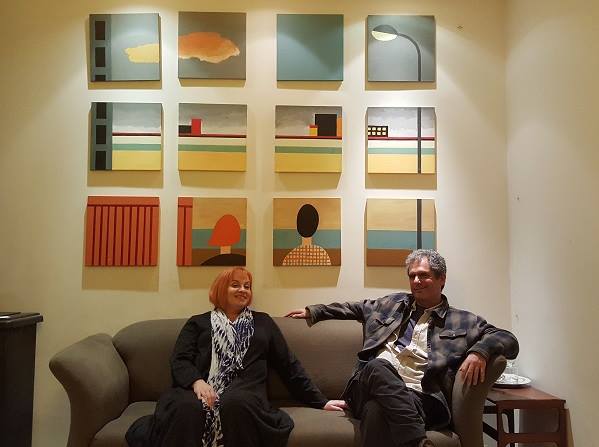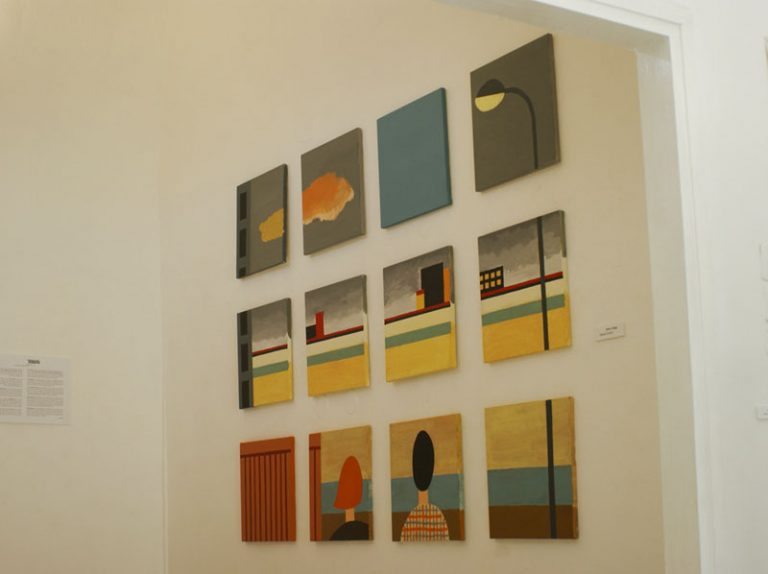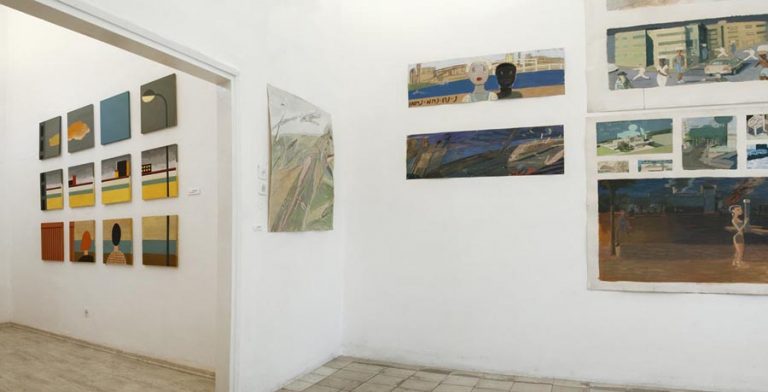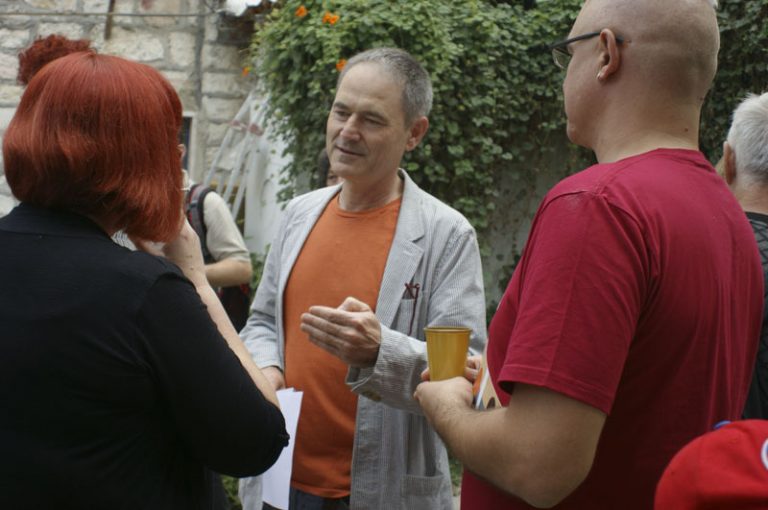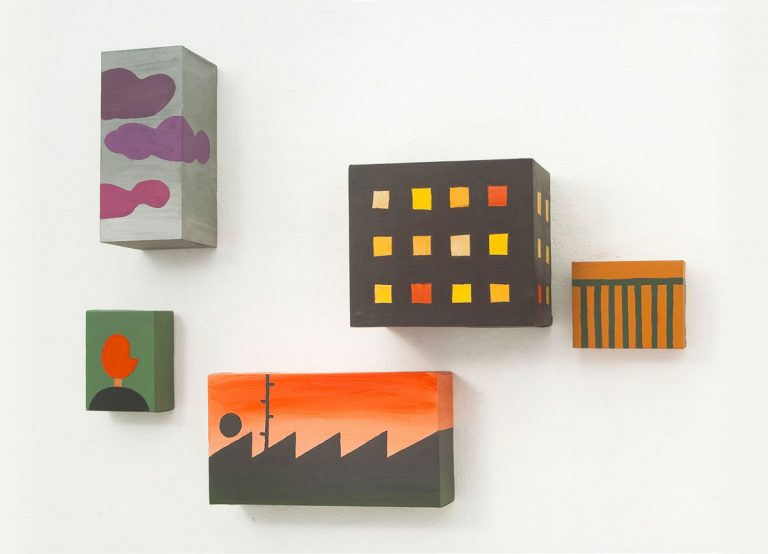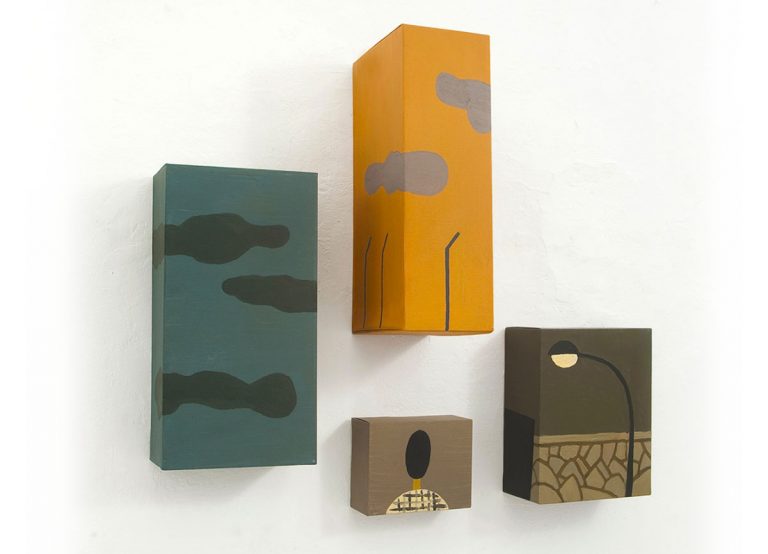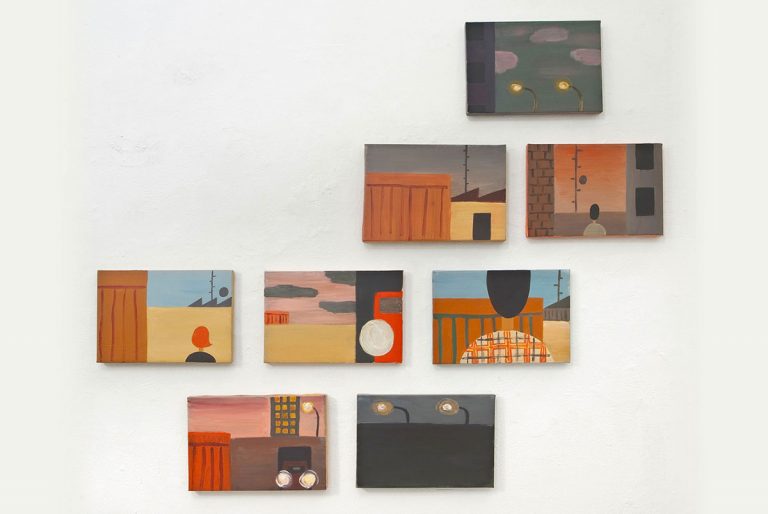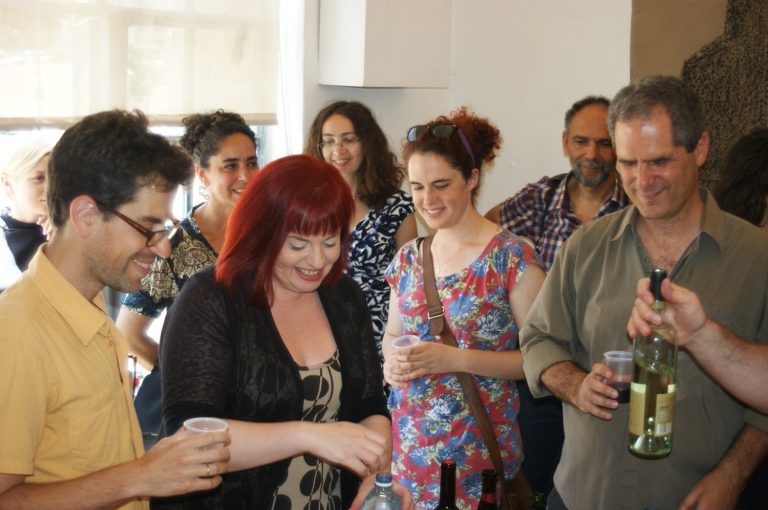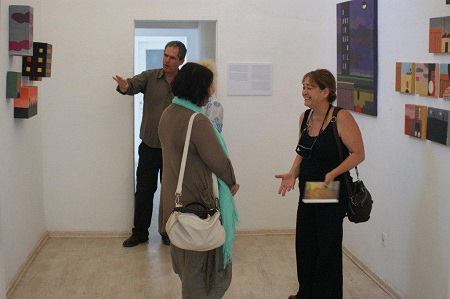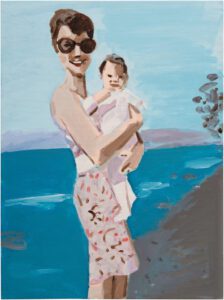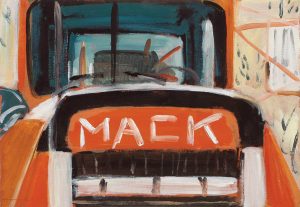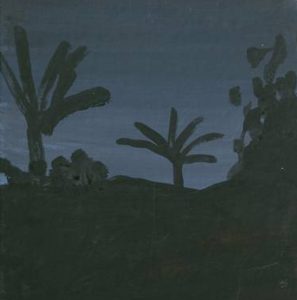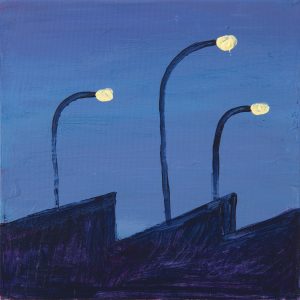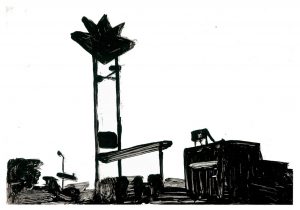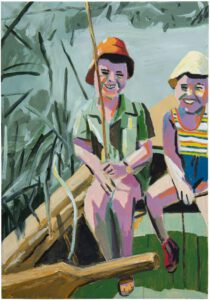Four Walls, Variations on an Urban Theme, group exhibition with Lena Zaidel, Boris Yuhvetz and Tenno Sooster,
curator: Lena Zaidel, November 2010, Agripas 12 Gallery, Jerusalem

The Spectators—an homage to Kazimir Malevich, placement composed of 12 squares, acrylic on canvas, 40X40 each, 2010
Oded Zaidel works with limitations. His paintings gradually shed graphic gestures, nuances, and complex images that appeared in his past works, for the sake of a pictorial and colorful, but slim and subdued, dictionary – a very basic collection of prefabricated forms that can be inserted each time for uniquely different purposes. Here, the circle is a head, there a flashlight, and elsewhere a moon.
Here the rectangle is a building, there a van, elsewhere a topographical image; while sometimes a square is a window, sometimes a frame, and sometimes just some form. It is a painting that seems like a promise of a painting – like a box containing a puzzle, on which is printed the picture that will be formed upon the correct assemblage of the pieces inside it.
A puzzle is also the association that rises to mind upon the contemplation of paintings in which the images that appear in them have been gathered from a variety of different and disjointed sources of inspiration – the American coastline, the Jerusalem urban scene, Russian constructivism, pure minimalism, industrial images, and amorphic geometric forms that have been transformed into human images adjacent to geometric forms that have been transformed into scenery.
Yonatan Amir

The Surface
Curator: Yonatan Amir, May 2012, Agripas 12 Gallery, Jerusalem
Untitled, 6 paintings from the exhibition, acrylic on canvas, 20X30 each, 2010
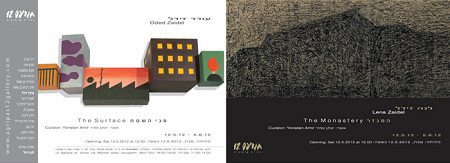
If Oded´s paintings seem like a promise of a painting, the scenery that appears in it seems like a promise of scenery. It is advertisement-like scenery that reminds us of the graphic television images of the 1950´s. On the surface, the paintings look like the images of a mask. Like the stereotyped “happy housewife” from television, these too depict what looks like a preformed pattern. However, in contrast to the image of the happy housewife, Oded´s images are not trying to sweep real-life drama under the rug and present hermetic forms of perfection. Rather, and surprisingly, despite the dullness of the schematic images, softness and emotion shine through them. The industrial images are not impersonal, the fenced scenery is not threatening, and the prefabricated forms are not lacking in character. Thus, though we are talking about schematically based paintings, these paintings meet the schematic in its later form, when it is free of the utopian promises that it represented in the beginning of the 20th century, and from the need to conceal the opposing currents that rage beneath it that appeared half a century later. The release from declared ideologies and role-playing leave the paintings of Oded Zaidel “emotionally free,” and as such, they are inevitably filled with emotion.
Yonatan Amir, Curator

